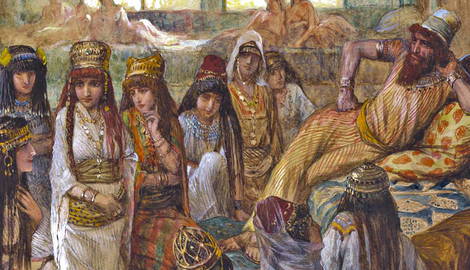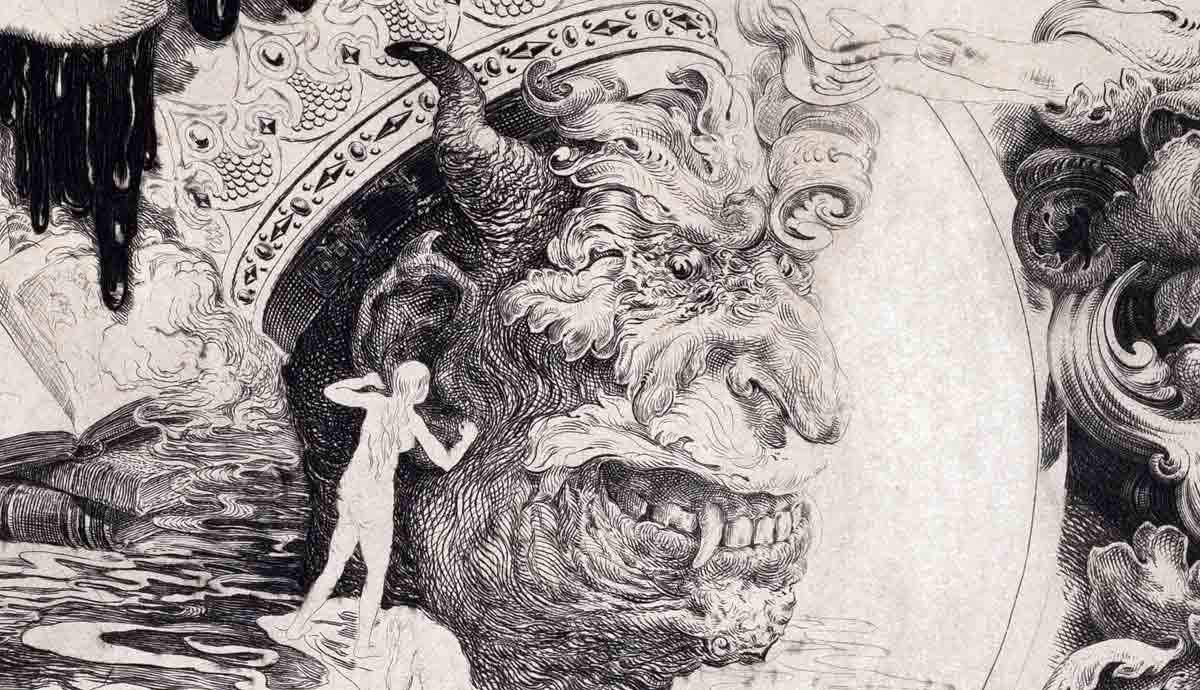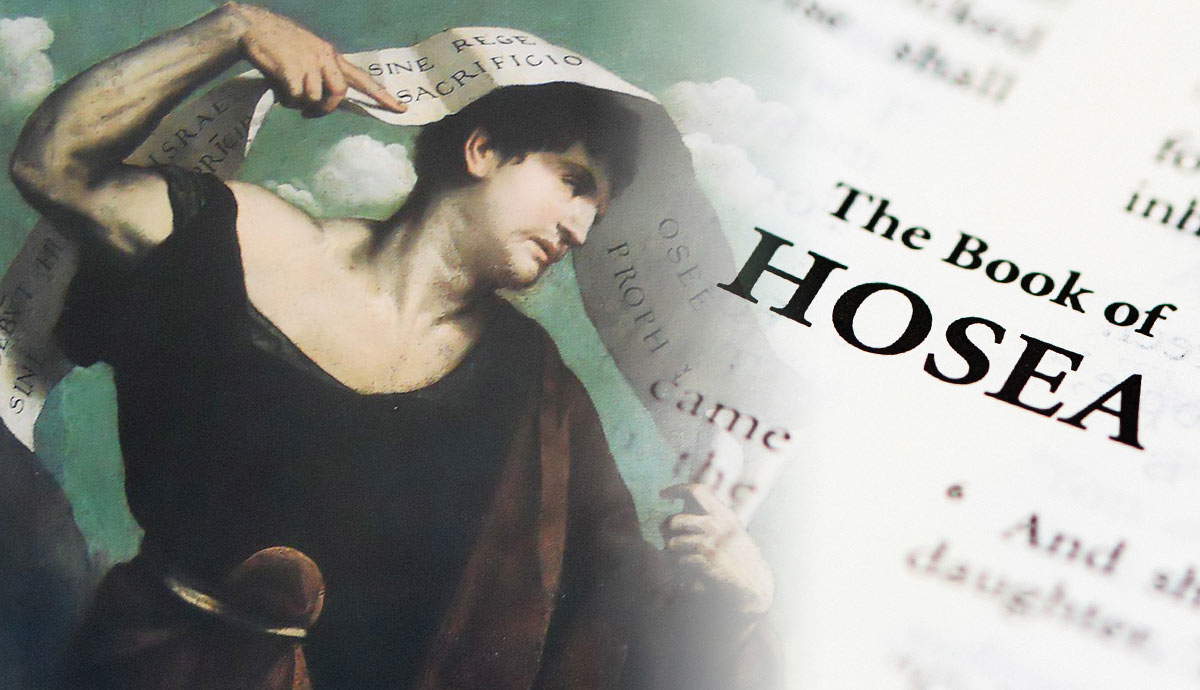
Despite frequent references in popular Western culture to heterosexual monogamy as the traditional (and sometimes even “biblical”) view of marriage, the Bible itself neither condemns polygamy nor enjoins monogamy. Christians or Jews interested in forming a theology of marriage are obliged to reason beyond the text, drawing from human experience, logic, and theological principles derived from the overall story the Bible tells about the human condition.
Monogamy in the Bible’s Second Creation Myth

If a reader begins in Genesis, the second creation myth she encounters presents the making of an original couple—a nameless man and woman later called Adam (meaning simply “man”) and Eve (a name whose pronunciation sounds like the Hebrew root word for “to live”) from whom all of humanity is understood to spring. The garden into which this couple is placed, which the reader understands is located on Earth, is idyllic and peaceful, free of violence, pain, and suffering.
The image suggests that this garden represents God’s good intention for creation. Thus, whether or not interpreters take the story as myth or literal history, it represents an ideal which humans should pursue, in one way or another. As such, the two-person nature of the human union presented therein has often been invoked in support of monogamy by people who use the Bible as holy scripture.
Where Is Polygamy’s First Appearance in the Bible?

If the first monogamous union in the Bible occurs in a paradisiacal environment, polygamy emerges against a far different backdrop. Lamech, the grandson of Cain— who was the world’s first murderer according to the Genesis story—is the first in the Bible said to have broken the single-wife norm. The narrator of the Lamech episode gives no moral commentary on his polygamy per se, but Lamech is remembered for only one thing in the two verses that record his speech: excessive vengeance. In defiance of the “eye-for-an-eye” principle that appears later in biblical law, Lamech boasts of killing a man for merely wounding him, and he boasts that his revenge surpasses that of his grandfather Cain.
This odd vignette does not say anything directly about marriage. But its presentation of a man known for escalating violence as the first person to breach the polygamy barrier seems, for many interpreters, to paint polygamy in a negative light.
Who Were the Polygamous Patriarchs?

The claim that polygamy’s initial appearance with Lamech on the pages of the Bible is evidence that holy writ opposes the practice can legitimately be called into question since Genesis’s would-be heroes also engage in it. Abraham had two wives at once, Sarah and Hagar. Isaac, his only son by Sarah, had only one wife, but Isaac’s heir Jacob—who was renamed “Israel” by a divine messenger—had four wives. From these four women the twelve Patriarchs of Israel were born, who are remembered as the fathers of Israel’s twelve tribes.
Far from being an aberration, polygamy is at the root of Israel’s story—which is to say it is essential to the biblical story as well. Still, it is important to note that the Bible does not present Israel’s founders as flawless exemplars. They are not chosen for their merit, but because of a mysterious divine will. Thus, the patriarchs’ marital practices are not necessarily presented as admirable.
Was Solomon Israel’s Most Polygamous King?

With regard to the marrying of multiple wives, Israel’s kings followed in—and raced beyond—the footsteps of the patriarchs. Interestingly, the book of Deuteronomy, a legal text, forbids kings from multiplying wives. But it does not specify how many would be an excessive number. Solomon, who is famous for having a thousand wives, is condemned by the narrator of the book of Kings for allowing his wives, many of whom were princesses from other kingdoms, to introduce foreign religious practices into his realm.
But it is not made clear that having so many wives was considered negative in and of itself. In reality, these marriages were diplomatically strategic, and were a part of the reason why Solomon was able to avoid war on the one hand and foster successful trade agreements with the kings of surrounding nations on the other, thereby paving the way for the wealthiest period in ancient Israel’s history.
Who Was Michal? David’s First Wife

While Solomon had far more wives than his father did, the David saga provides much more material for an exploration of polygamy’s effect on an ancient Israelite royal family than does anything we are told about Solomon’s life. Unlike Solomon’s wives, about whom little is discussed, several of David’s wives take active roles in the story of the early monarchy’s formation. Michal was Saul’s daughter whom he gave to David as a bounty prize for David’s killing of Philistines, who were Israel’s enemies at the time. The story says that Michal loved David. When Saul eventually begins to see David as a threat to his throne and sets out to kill him, Michal rescues him by deceiving her father.
Michal’s is a tragic tale, however, for it appears that David never reciprocated her affection. She died childless, under circumstances that suggest to the reader this may have been due to David’s intentional neglect rather than a biological disruption.
Who Were the Other Wives of David?

David acquired a total of eight wives, two more of which stand out as important for his story. While running from King Saul, David had a conflict with a man named Nabal for whose shepherds David had provided protection. When Nabal rebuffs David’s request for provisions, David swears he will kill him and all the male members of his family. But Nabal’s wife Abigail intervenes, even as her husband lies drunk in their home, meeting David and his entourage as they approach. Bowing before David, she asks for mercy and gives David what he had demanded. When Nabal dies later of heart failure, David takes Abigail as his third wife.
Bathsheba was David’s eighth wife. David acquires her in the story by having her first husband, one of David’s soldiers, murdered. With the help of the Prophet Nathan, Bathsheba eventually succeeds in persuading David to have her son Solomon crowned his successor instead of David’s oldest son Adonijah.
What Was the Hebrew Bible’s Posture Toward Polygamy?

The Hebrew Bible assumes that some men will marry more than one wife, and it never condemns or overtly discourages the practice. Deuteronomy, in fact, commands that a custom called “levirate marriage” be followed. In this custom, if a married man dies without producing a son who can inherit his name and property, the dead man’s brother is obliged to marry the man’s widow. The hope is that a son will be born of this union, who will then be legally reckoned the heir of the widow’s dead husband. In cases in which the surviving brother is already married, this law would in effect be commanding polygamy.
Thus, it is fair to say that the Hebrew Bible does not discourage polygamy overtly. Still, some interpreters argue that a great deal of relational pain could have been avoided had the biblical families been strictly monogamous, and that these negative family dynamics imply that polygamy is best avoided.
Male Dominance of Women in the Bible

The world the Bible reflects is one in which men are dominant. Family lines are passed down through the male, and women are often left unnamed and their voices unheard unless their actions make a significant difference in the story. Their legal and inheritance rights are quite different from men’s, and they are treated in war as part of the spoils.
With regard to the subject of polygamy, the difference with which men and women are viewed in the Bible is particularly stark. In contrast to its tolerance—even if reluctant—of male polygamy, there is no example in the Bible of a woman legitimately engaging in sexual union with more than one man. Men who pursue sexual encounters with women tend to face few consequences—even if their actions are frowned upon—as long as they do not meddle with other men’s wives. Women, on the other hand, are expected to remain sexually exclusive to their husbands, and unmarried women are expected to marry a man with whom they have had sexual relations.
Polygamy in the New Testament

The New Testament adds little to the discussion of polygamy in the way of direct instruction. In terms of a theological foundation for change, however, it offers a great deal. The New Testament uses marriage as an analogy for Christ’s mystical relationship to the Church. This relationship is permanent, entirely voluntary, and is founded on self-giving devotion rather than coercion, with Jesus’s death centered as the principle image for the humble love and respect that ideally characterize it. This, along with the doctrine that the universal Church is essentially “one body” as opposed to multiple groups, makes monogamy the most well-suited marital arrangement to symbolize this union.
There is one passage that says a church leader must be a “one-woman man,” and some suggest this is meant as an ideal for all Christians rather than a specialized instruction for church leaders only. Elsewhere, Paul suggests that celibacy is superior to marriage, which is yet a step further from polygamy.
Did Christianity Invent the Monogamous Ideal for Marriage?

Christian idealization of monogamy was helped along, in a roundabout way, by Roman law. According to Roman custom in the First Century, men were permitted to have only one wife. Christianity, thus, cannot claim credit for inventing the monogamous ideal of marriage per se.
However, it can claim responsibility for extending sexual exclusivity within monogamous marriage to men by requiring that they be held to an equal sexual standard as their wives. While a free Roman man had sexual access to prostitutes, consorts, and slaves in addition to his (one) wife, Christians insisted that men and women alike had to limit their sexual activity to a single, marital relationship. In this way they drew upon the Jewish ethic, enshrined in biblical tradition, of limiting sexual intercourse to marriage while simultaneously drawing upon the peculiar (for its day) Roman restriction of a single wife per man.











